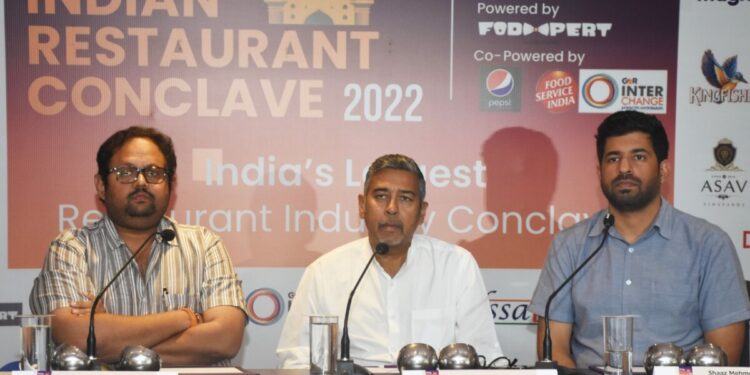-KH News Desk
At the HICC in Hyderabad, the National Restaurant Association of India (NRAI) recently wrapped up its AGM and The Indian Restaurant Conclave 2022 (TIRC). The state of Telangana successfully obtained an investment commitment of about INR 500 crore in a single day by focusing on this massive event. The Telangana government’s TS-iPASS portal, a single-window application for the food service industry, was also launched during the occasion.
The state received significant investments from Wow Momo ($50 million), Olive Bar and Kitchen ($30 million), McDonald’s ($100 million), Impresario Group ($30 million), PH4 Food and Beverages ($10 million), Almond House ($67 million), Chubby Cho ($20 million), Alive Hyderabad ($30 million), Chaayos ($40 million), Farzi Café ($20 million), Azure Hospitality ($20 million), and Barbeque Nation ($20 million).
The NRAI Hyderabad Chapter has made a substantial contribution to the state’s improved Ease of Doing Business (EoDB). The TS-iPASS portal, which was introduced during the event, will guarantee that licenses are processed more quickly and efficiently through a single window, improving the region’s ease of doing business to a window of 15 days, down from 8 months previously.
Insightful panel talks that are current with the industry were also included at the event. The panellists highlighted a number of significant issues during a debate on the top 30 locations in India for the F&B industry. The panellists featured Riyaz Amlani, CEO and MD of Impresario Handmade Restaurants, Sagar Daryani, Co-Founder and CEO of Wow Momo, Rahul Agarwal, CEO of Barbeque Nation, and Raghav Joshi, Co-Founder of Rebel Foods.
According to Agarwal, in the next few decades, the demand would be similar across metro and non-metro cities. “Over the next six years, GDP is going to double, per capita income is also going to go up by three times. Which means that once there’s more money in the hands of people and the basic needs are taken care of, the discretionary spending will also come up and that is what we are seeing across the nation,” he added.
Stating that Tier-II & III would make the future of the F&B industry bright, Daryani said, “Real India is the Tier-II & III cities. The real juice is lying in these cities as the people are becoming aspirational and want to try new things. The positive thing is that the rent to revenue ratio is much lower, and due to that one can make profits. The most important thing is to identify the gap to open up the market share. So, I suggest that one should build their brands in Metro cities, grow there, operate in a single digit EBITDA, however, since the double-digit EBITDA will come from Tier-II & III cities, so he should think of expansion in those cities as well.”
According to Gupta, the strategy is different for different brands as in India there’s been a lot of dependence on socio-cultural regions to be the master of their own market. “As a biryani brand, our approach is to penetrate its own socio-cultural region market and then move from there, which is really extremely important. Also, the most important thing is to have a Hero product/Hero brand.”
Shaaz Mehmood, the founder of the NRAI-Hyderabad Chapter and a member of the national MC for NRAI, discussed the value of technology in the F&B sector. He emphasised the significance of artificial intelligence (AI) in the food and beverage industry and urged all F&B business owners to concentrate on developing AI tools that will eventually help them better understand their customers using the customer data they already have from the POS, loyalty cards, and other sources.
“That would be the next gen-ideate to be innovative for our industry. By doing so, we could get the digital DNA of the customer which could help the businesses to understand the customer better.”
Amlani said that the confidence in India has changed. “For the last two decades people consumed only westernised products and due to this we never really had a chance to consume our own product as a lifestyle. Now we may realise that the Indian palette is possibly the most sophisticated of all. What we need now is not disposable income but disposable time. In Tier- II, and III cities people have more disposable time and more disposable income due to the easier cost of living.”
Best Wishes From:








